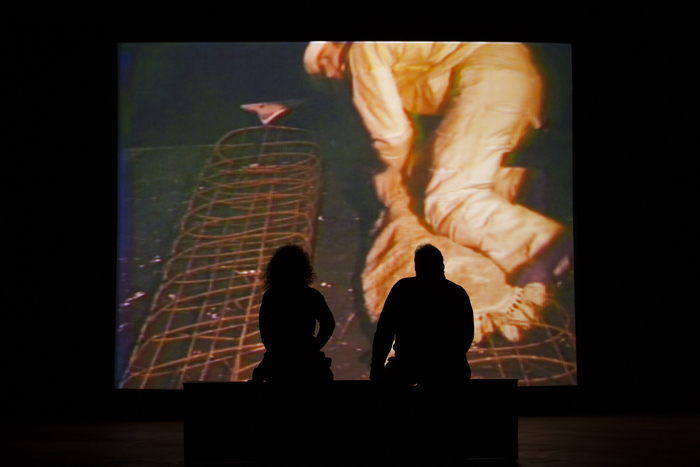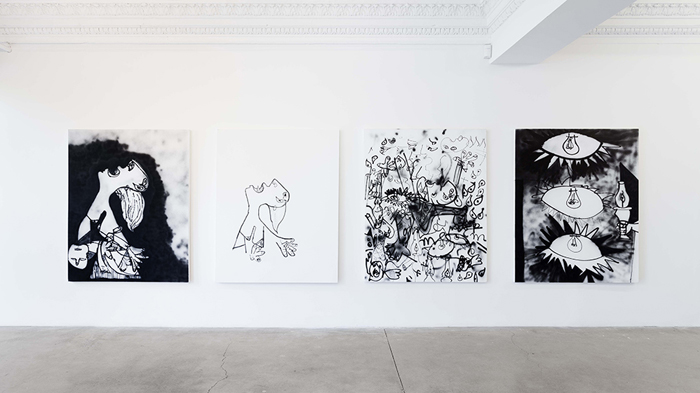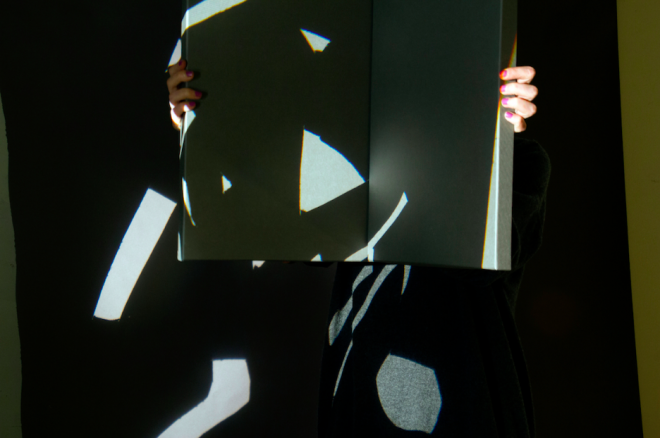I was always drawn to Mike Kelley’s work. Every time I saw something of his, I always thought that I should look more into his work. Somehow, I never did. Then he committed suicide, which was unexpected. So when I heard that a show curated by Emi Fontana (known in Italy as a successful gallerist who closed her space in Milan to follow Mike Kelley to California) was going to be put up at the Hangar Bicocca (a huge, spectral and fantastic space in the outskirts of Milan), I was rather pleased. After all, living in the middle of almost nowhere in Italy doesn’t present many of these opportunities.
I had mixed feelings entering the dark space of Bicocca; not about the show, I had mixed feelings about myself. A part of me wanted to see the works, but most of me wanted to see the person, the artist who killed himself at the peak of his career. I didn’t want the voyeuristic side of me to overtake my curiosity, but I also hoped I could grasp a hint of a reason for suicide. I have lost some friends and artists in this way, so I kind of looked at this show with sadness and curiosity.
Kelley was working on a major retrospective that was to travel Amsterdam, Paris, and many other venues until he committed suicide. This exhibition can be seen as a compendium to that show, with ten of his major installations, largely unseen in Europe. The seminal works chosen by Emi Fontana and Andrea Lissoni show not only the complexity of his art making process, but also the continuity of his process. Most of these works are from the decade of 2000, a time following a period where serial bodies of work seemed to be rare. The preceding decade seemed to have formed a void of ideas that was hard to be fulfilled. In a sense, however, Mike Kelley did fill this void, especially with the theatrical side of his work, now that performance art seems to be all over the place in the art world.
On a more personal level, I love the irony in most of his work. There’s an utter sincerity where elements are displayed in what seems to be a haphazard organization, but there’s always an overriding consciousness that tells you there’s nothing random in his presentation. He’s quite old school in the way that each symbol is approached and expressed, but what these symbols mean is not the core point of the work. There’s something very emotional in how he’ll take someone’s memory and then “recreate the people” that were in this photograph. For example, he would pick a photograph from a random yearbook and reconstruct and re-enact the staging of the photo, making it up in his own [original/twisted?] mind. He was very good at casting these characters so that they seem to really be a copy of the original, posed in a sarcastic manner.
There’s one piece, Rose Hobart II from 2006, that from the outside appears as a sort of a big geometrical sculpture, until the guard tells you that you can actually go inside it. You take off your shoes and enter this tiny tunnel, dark and covered in carpet. There is a sound that takes you into a weird atmosphere, and at the end there’s a tiny light: you look through it and you see scenes from the movie Porkys. I’m not sure what it was like in 1981 in the US, but in Italy at the time it was considered something of a trash movie, almost so bad that it was good. So you’re into this construction, and you’re running out of air, and you see these naked teenagers, and guys behaving terribly. Everything is slowed down, and there’s this eerie music, but it feels kind of good, and you really don’t want to leave. I don’t know how long I stayed there when I visited. I was at peace, and I think Mike Kelley wanted us to feel this way. It kind of made me grasp the “Americanity” of his work.
Another work in the exhibition shows a video of a performance in Germany, Runaway for Interactive DJ Event, together with the installation of a platform strewn with dolls’ clothes and accessories. You can see him dancing around and displaying sexual ambiguity as a will of the artist: in this kind of work, Kelley portrayed the true artist’s undecided nature in our postmodern climate. His message is universal not only because he shows how indecisive an artist can be (about his past, about his gender, about his behavior, and about his strength), but also he shows us how indecisiveness is a part of ourselves in any aspect of our life. I believe that looking at Mike Kelley’s work from a psychiatric angle is very limiting perspective, although there’s a strong part of his psychosis that is displayed in his work. I don’t think this is the most valuable part, nor do I think his suicide is important in the understanding of his complex body of work. This swirl of philosophical indecisiveness is what I got as the strong Mike Kelley statement. In a way, I think we’re all Mike Kelley, really.
By Stefano W. Pasquini



















